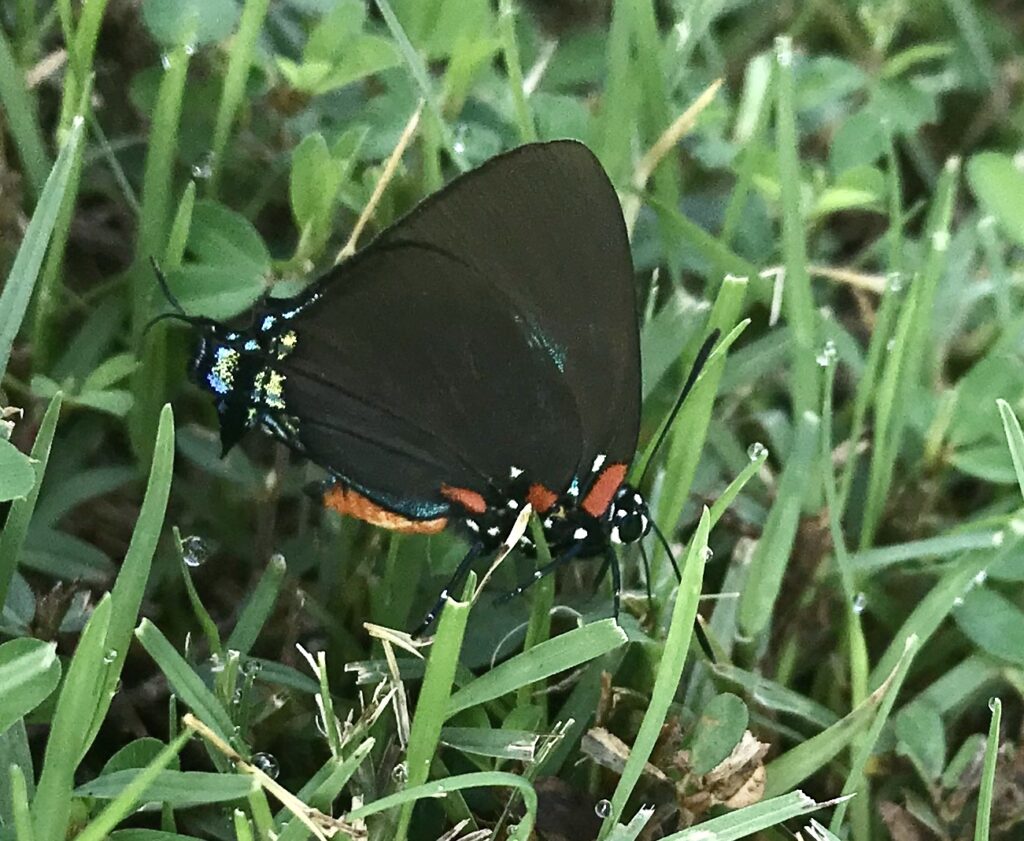Great Purple Hairstreak
Monday, August 31st, 2020
The real highlight of today was finding an exquisitely beautiful little butterfly called a Great Purple Hairstreak. A tiny, dark-winged butterfly with glittering touches of blue, white and orange, it looked like a jewel, sparkling in the morning sun in very green grass and clover still wet from overnight rain and dew.
The sun must have lit it in just the right way for me to see it in the grass because despite its grand name, it was a very small butterfly. At first, with its wings folded up, it just looked black, but it glistened in the sun. When I knelt down for a closer look, I began to see brilliant markings of iridescent blue and silvery-gold, and black tails on the back of the wing. In the part of the wings closer to the head and body, there were bright red-orange spots. The back part of the abdomen was a softer orange. The head was black patterned with white spots, and with threadlike black antennae.
And the wings themselves were lovely. It’s hard to describe them well enough to capture their elusive quality. They were very dark, at first I thought black, but the color seemed to change slightly with different angles, and I would describe it more as very dark coppery-brown with a slight purple sheen. Once when the wings shifted I saw a flash of rich iridescent blue. This was a glimpse of the much more showy upper side of the wings – which I never saw fully because the they remained folded, and I never saw it in flight.
The delicate patterns of iridescent blue and silver-gold, together with the thin black tails at the back of the wings all came to life more when the back wings shifted slightly up and down – so that the back of the butterfly’s wings looked almost like another head. As with other hairstreak butterflies, this pattern and movement is thought to be a protective strategy against predators.
Not at all fluttery, the tiny Great Purple Hairstreak stayed in this one place for many minutes. I was afraid I would frighten it into flight, but as the minutes went by, I even had time to take several photos with my iPhone. It was still there when I finally walked on toward home.
Great Purple Hairstreaks are found throughout the southern U.S., and while they are considered common, this is the first time I’ve ever seen one. Their larva feed only on mistletoe, and the adults may feed on nectar from many different kinds of flowers, including goldenrod, sweet pepperbush, saw palmetto and wild plum. They are said to be fairly easily attracted to flower gardens.